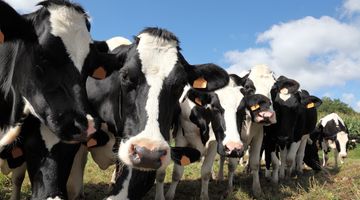Understanding cows and their behaviour has been critical in working out how to ensure that this happens. Kendra Davis and Jenny Jago explain.
Transcript
Dr Kendra Davis (DairyNZ)
This system has been developed a lot differently to Automated Milking Systems overseas. Generally overseas the Automated Milking Systems have been brought into place to try and increase the number of milkings they can get per cow, per day. So instead of milking cows twice a day, they might like to be milking the cows three times or four times a day, but it becomes quite difficult to get the labour required to do that. So that is how robotic milking really came about overseas and the main reason for it.
In New Zealand our approach has been quite a bit different, in that in New Zealand we are not feeding out cows as well, they are not on really high energy feeds, so they don’t produce as much milk. The cow is limited by how much grass she can physically eat in a day, because it’s quite a bulky feed, so our cows don’t produce as much milk, and what we know in NZ, is that we can actually drop our milking frequency. So instead of milking cows twice a day, we can drop them down to once a day. We do take a small drop in production per cow, but we can maintain our farm’s production by putting a few more cows on. That knowledge has had a big impact on the system that we have set up. So what we are doing in the Greenfield system is trying to milk cows 1.3 times a day, which is an average of once every 18 hours. Now the reason….it sounds like quite an obscure number, but the reason for that is we know that the capacity of a cow’s udder is about 18 hours, so if we go beyond that we are going to start impacting on the per cow production quite a bit. But if we stay sort of within that 18 hour interval then we should still get really good production per cow. So the less often we milk an individual cow, the more cows we can milk per machine, because obviously every cow milking takes up a certain amount of time. So if we minimise the number of milkings per cow, we can maximise the amount of cows per machine and that gives a lot more milk harvested, per machine, per day, which has a big effect on the economic viability of the system.
Dr Jenny Jago (DairyNZ)
The cow behaviour is absolutely critical in this farming system, because what we are essentially wanting to do here is develop a system where the cows milk themselves. And if you don’t understand the behaviour of the cows, then it’s most unlikely you are going to develop a system where they are able to milk themselves. When we say “milk themselves” that means they must get themselves from a paddock, down a race area, into a yard, learn how to enter a fairly strange contraption, stand correctly, allow manipulation of the udder as the robot puts the cups on, and then go off on her way. So all that requires a good understanding of the cow, what she is able to learn, and what drives that cow, what motivates that cow. If you understand what motivates that cow, then you can work towards developing a good system for that cow.



